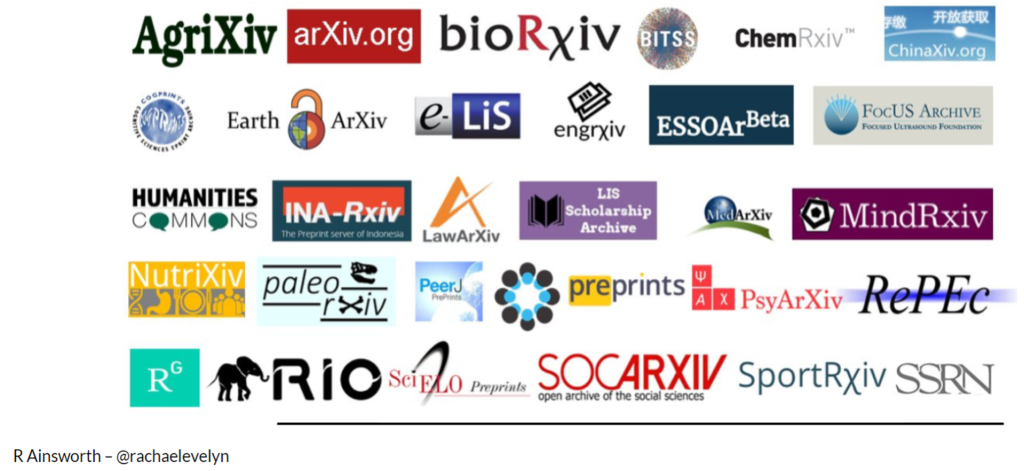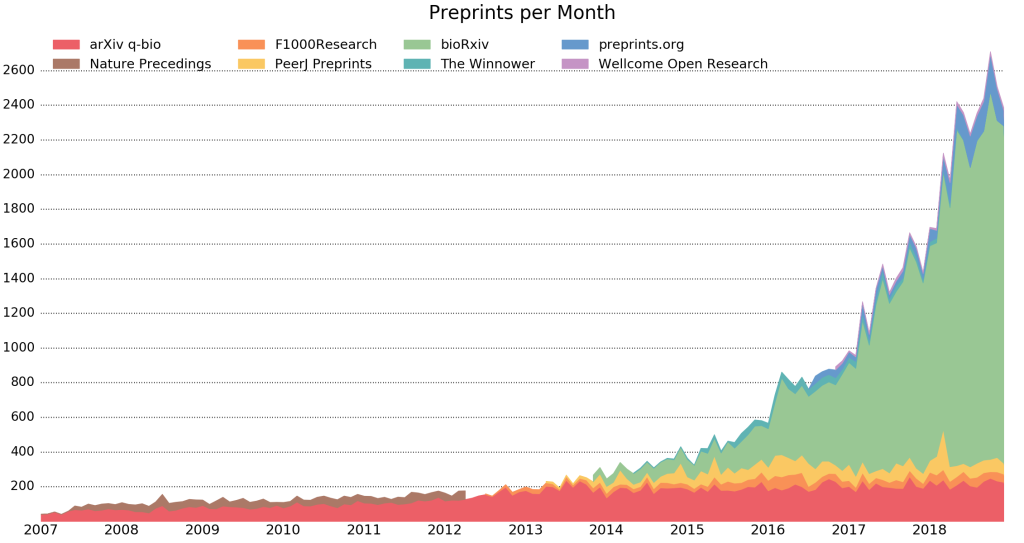Preprints? What? They are published, non-peer-reviewed scholarly papers that precede publication in a peer-reviewed journal. They have been a part of science since at least the 1960s. ArXiv, arguably the most prominent preprint system, has served the physics, mathematics, and computer science communities for more than 25 years and since there is a exponential growth!
I was not very familiar with preprints until summer 2019 and the conference of Jon Tennant on Shifting research cultures towards open scholarship!

But what about preprints in Earth Science and in Geochemistry? Check these 2 good articles about the last platform EarthArXiv in eos and in Nature Geoscience.

I started using it with my first 2 preprints (one is since peer-reviewed and published), you can read them:
and
Don’t be afraid to be scooped! Your article will received a doi!
Paul Ginsberg, the creator of arXiv, suggests that stealing research ideas or information from preprints is not an issue if preprints are common standard in a scientific community as they are in physics. This way, editors and peer-reviewers are aware of the true owner of the work and “no one can plausibly claim that they ‘did not see it’”.

